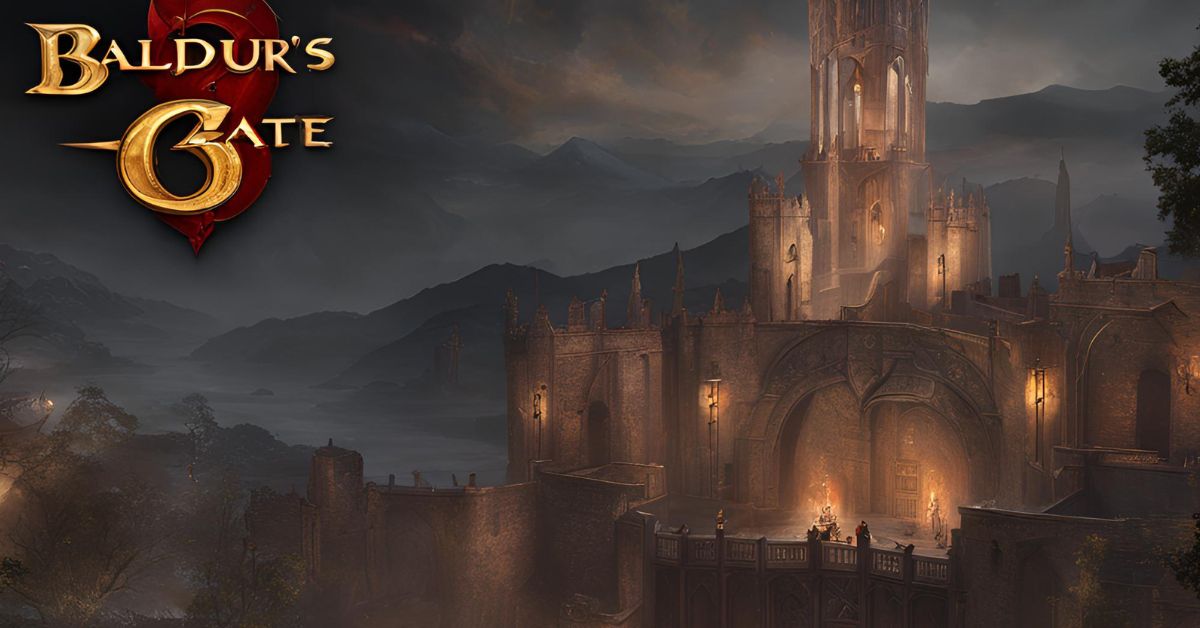Dungeons & Dragons (D&D) and video games have long shared a mutually beneficial relationship. The latest example of this interplay comes as D&D’s lead designer, Jeremy Crawford, announces changes to some spells in the 2024 Player’s Handbook. Inspired by his experiences playing Baldur’s Gate 3, Crawford aims to enhance gameplay both on the tabletop and in digital realms.
Table of Contents
ToggleThe Impact of Baldur's Gate 3 on D&D
The relationship between D&D and video games is one of constant feedback and evolution. Video games often bring D&D mechanics to life in new ways, providing valuable insights into gameplay dynamics that can inform future rulebooks. Read more such articles on Gamingepicenter.com
D&D and Video Games: A Symbiotic Relationship
Baldur’s Gate 3, developed by Larian Studios, is a prime example of how video games can influence tabletop RPGs. The game uses the 5th edition D&D ruleset, allowing players to experience D&D’s intricate mechanics in a digital format. This symbiosis has highlighted areas where tabletop rules can be refined for better gameplay.
Cloud of Daggers: The Infamous Spell
One significant change Crawford highlighted is to the spell Cloud of Daggers. This second-level spell conjures a cube of spinning daggers, dealing damage to anyone who enters or starts their turn within it. However, in Baldur’s Gate 3, the AI’s poor handling of this spell led to numerous unintended NPC deaths.
Original Mechanics
In its original form, Cloud of Daggers creates a static, five-foot cube filled with magical blades. This stationary trap could be strategically placed to control the battlefield and inflict consistent damage.
Issues in Baldur’s Gate 3
The static nature of the spell in Baldur’s Gate 3 resulted in NPCs repeatedly walking into the cloud, often leading to their demise. This behavior exposed a flaw in the AI’s pathfinding abilities, making the spell a source of unintended frustration rather than strategic advantage.
New Mechanics and Changes
To address these issues, the spell has been redesigned to allow players to move it across the battlefield, similar to Moonbeam. This change not only mitigates AI pathfinding issues but also enhances the spell’s versatility in both digital and tabletop formats.
Action Economy in D&D
Action economy is a fundamental concept in D&D that dictates how players can utilize their turns effectively. Spells and abilities that are cumbersome or require multiple actions can disrupt the flow of gameplay.
Definition and Importance
Action economy refers to the management of actions during a player’s turn. Efficient action economy ensures that players can maximize their turn without unnecessary delays or complications.
Examples from Baldur’s Gate 3
Spells like Cloud of Daggers and Produce Flame in Baldur’s Gate 3 highlighted issues with action economy. The need to re-summon a flame or move a spell can make the game feel sluggish and reduce the overall enjoyment.
Produce Flame: A Cantrip Under Scrutiny
Another spell undergoing changes is Produce Flame. This Druid cantrip allows players to summon a small flame in their hand, which can be used to attack or illuminate.
Original Spell Design
Originally, Produce Flame required players to take two turns to use it effectively. The first turn to summon the flame and the second to attack, which could be frustrating and reduce its practicality.
Frustrations in Baldur’s Gate 3
In Baldur’s Gate 3, this two-step process became “excruciating” according to Crawford. The need to repeatedly extinguish and relight the flame made the spell cumbersome and inefficient.
Proposed Changes
Crawford’s proposed changes aim to streamline the spell, possibly by allowing the flame to remain active after an attack. This adjustment would make the cantrip more fluid and less frustrating to use.
Other Spell Adjustments Influenced by Baldur’s Gate 3
Baldur’s Gate 3 has prompted a review of several other spells, including Moonbeam, Fireball, and various healing spells. Each of these spells has been scrutinized to ensure they contribute positively to the action economy and overall gameplay experience.
Moonbeam
Like Cloud of Daggers, Moonbeam can now be moved, providing strategic flexibility and addressing AI pathfinding issues in digital games.
Fireball
Fireball remains a staple spell but may see tweaks to ensure it balances power with gameplay fluidity, especially in digital adaptations.
Healing Spells
Healing spells are being evaluated to ensure they provide timely and effective support without bogging down the action economy.
Community Reactions to Changes
The D&D community has been vocal about these changes, with feedback ranging from excitement to skepticism. Players appreciate the efforts to improve gameplay but are also cautious about how these adjustments will affect long-standing mechanics.
Feedback from Players
Many players welcome the changes, especially those who have experienced the frustrations firsthand in Baldur’s Gate 3. They look forward to a more streamlined and enjoyable gameplay experience.
Speculations and Expectations
Speculations abound about the impact of these changes on future adventures and campaigns. Players anticipate more fluid combat and strategic planning with the new mechanics.
The Role of AI in RPGs
AI plays a crucial role in video games, especially in RPGs where NPC behavior can significantly impact the player’s experience.
AI Pathfinding Challenges
Pathfinding is a common challenge for AI, leading to unintended behaviors and frustrations in games like Baldur’s Gate 3. Improving AI responses to player actions is essential for a seamless gameplay experience.
How AI Impacts Gameplay
Effective AI enhances immersion and challenge, while poor AI can break the flow and immersion of the game. Addressing these issues ensures a more cohesive and enjoyable experience.
Baldur’s Gate 3: A Case Study
Baldur’s Gate 3 serves as a case study for the interplay between digital and tabletop RPGs. Its use of the D&D 5th edition ruleset provides valuable insights into how these mechanics translate across different formats.
Overview of Baldur’s Gate 3
As a highly anticipated game, Baldur’s Gate 3 offers a rich, immersive experience based on D&D’s rules. Its success has highlighted the strengths and weaknesses of these mechanics in a digital environment.
Integration of D&D Mechanics
The game’s integration of D&D mechanics has been largely successful, but it has also revealed areas for improvement, prompting changes in the upcoming 2024 Player’s Handbook.
Future of D&D Rulebooks
The 2024 Player’s Handbook is set to incorporate these changes, reflecting an ongoing commitment to improving the game based on player feedback and digital adaptations.
Anticipations for the 2024 Player’s Handbook
Players eagerly anticipate the new rulebook, expecting it to enhance their gameplay experience with more streamlined and effective mechanics.
Ongoing Developments and Playtesting
Continuous playtesting and feedback are vital for the evolution of D&D rules, ensuring that future editions meet the needs and expectations of the community.
Modding and Community Innovations
The modding community in Baldur’s Gate 3 is expected to embrace these changes, creating mods that reflect the new rules and enhance the game’s fidelity to the tabletop experience.
Modding in Baldur’s Gate 3
Full mod support in Baldur’s Gate 3 will allow players to customize their experience, potentially integrating the new spell mechanics from the 2024 Player’s Handbook.
Expected Mods for New Rules
The community is likely to develop mods that incorporate these changes, ensuring that players who prefer an updated ruleset can enjoy it in their digital adventures.
D&D's Lead Designer Adjusts Spells Inspired by Baldur's Gate 3 Conclusion

The interplay between Baldur’s Gate 3 and D&D has led to significant improvements in spell mechanics, enhancing the overall gameplay experience. These changes reflect a commitment to evolving the game based on player feedback and practical insights from digital adaptations. As we look forward to the 2024 Player’s Handbook, the future of D&D promises to be more streamlined, enjoyable, and engaging.
D&D's Lead Designer Adjusts Spells Inspired by Baldur's Gate 3 FAQs
What is the reason behind changing Cloud of Daggers?
Cloud of Daggers was changed to address AI pathfinding issues in Baldur’s Gate 3 and improve its action economy in the tabletop game.
How will the new Cloud of Daggers work?
The spell can now be moved around the battlefield, similar to Moonbeam, providing more strategic flexibility.
Why was Produce Flame redesigned?
Produce Flame was redesigned to reduce the friction and frustration of its two-step process, making it more efficient and enjoyable to use.
What is action economy in D&D?
Action economy refers to the management of actions during a player’s turn, ensuring they can maximize their turn without unnecessary delays.
Will these changes affect Baldur's Gate 3 gameplay?
The changes will not retroactively affect Baldur’s Gate 3, but mods may integrate the new rules for players seeking an updated experience.
How can players adapt to these new spell mechanics?
Players can adapt by familiarizing themselves with the new mechanics and incorporating them into their strategies for more effective gameplay.
